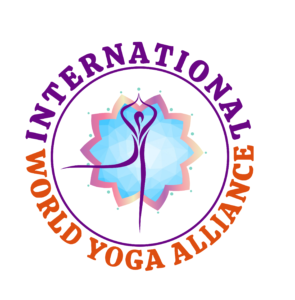What does this have to do with Yoga Therapeutics?
Well, our Therapeutics classes integrate many different healing modalities – Yin and Restorative yoga, strengthening and core work, breath work, guided meditation, Ayurveda, and, Self Awakening Yoga Movement Inquiries… some of which I’ll fondly refer to as “rolling around on the ground.”
When I came across the article I was struck by the images… there were a few that looked remarkably similar to some of the Self Awakening Yoga Movement Inquiries. Like this “Scorpion” and “Straight Leg March” examples below. The images drew me in, and the article itself reinforced the significant value of these movement inquiries.
According to the research complied by the Times
“The old presumption that holding a stretch for 20 to 30 seconds — known as static stretching — primes muscles for a workout is dead wrong. It actually weakens them…
Stretching muscles while moving, on the other hand, a technique known as dynamic stretching or dynamic warm-ups, increases power, flexibility and range of motion.”
I’ll often describe one of the intentions of Self Awakening Movement Inquiries as: Reclamation of Our Inherent Range of Motion. That’s a big fancy phrase, and sometimes I imagine a king’s trumpeters blowing in the background as I say it. But the truth is, that kind of effect in the body does deserve a little fanfare. We move through this life, stub a toe here, break a leg there, slip a disk here, pull a muscle there, and pretty soon we’re lopsided, sore and in pain. Don’t we deserve to reclaim a bit of our mobility and suppleness? Turns out, we’re empowered to do exactly this, just by rolling around on the ground.

Many of you know, I’m super nerdy about the science of yoga and love me some cutting-edge research. But I’m also in the fortunate position of being able to witness the powerful effects of this practice first-hand. What I see in class and in private sessions absolutely upholds what the experts are finding.
The other day I was working with a brand new client, he has arthritis in his neck, symptoms of Lyme disease in his joints, has had numerous surgeries and does not practice yoga. He started as we often do in class, by lying on the ground and noticing how it felt. He shared that was very uncomfortable, and he had to bend his knees and place the soles of his feet on the floor to alleviate pain in his lower back. We began with some head rolls from side to side and I asked him how it was going. He said “Fine. Well, I just go to where I feel resistance and push.” This is something we’ve all done and in fact most of us were taught in grade school. I explained that this was a little different, that movement inquiries aren’t about pushing past our edge, but that the exploration was actually where the benefit lay. I suggested something that many of you have heard me say — that he not worry about getting all the way to the edge, and instead focus on feeling every millimeter between one side and the other. Feeling the shifting of the weight of his own body and exploring all the places the head could roll.
He was able to slow down and really try this unfamiliar (and, admittedly, kind of strange) practice. We went through the whole therapeutic reclining spinal series and then I asked him to notice how he felt. He was lying fully on the floor with his legs outstretched, his back and his whole body felt “settled” on the floor, “not like before when there were just a few painful points touching the mat.” He was really surprised at how comfortable he felt when he had begun in such agony a mere hour prior.
Hmmmm. So there’s really something to this dynamic stretching thing. Movement Inquiries take dynamic stretching it one step further – a key distinction being the act of paying attention. Bringing consciousness to our bodies, our sensations, our movements and even our stillness. This is where stretching can become yoga. Inviting the body to move, and turning our attention on that movement, is like shining a flashlight into all the little nooks and crannies that time forgot. Sometimes just by shining that flashlight of awareness on a forgotten nook is enough to re-enliven it and reawaken even more range of motion. This is where movement becomes Movement Inquiry.

Now, does all this mean there is no place for stillness in stretching? Absolutely not. For example, both Restorative and Yin Yoga incorporate stillness for longer periods of time with profound health effects. Over the coming weeks as we continue this Therapeutic Essentials series of articles we’ll #Go Deep into these modalities as well. Instead, what this article reveals is that, whether we are athletes or not, we benefit from this “dynamic stretching.” In considering regular body maintenance, or as we prioritize healthy aging and self-recovery from physical issues, I believe this form of Right Movement is absolutely essential.






